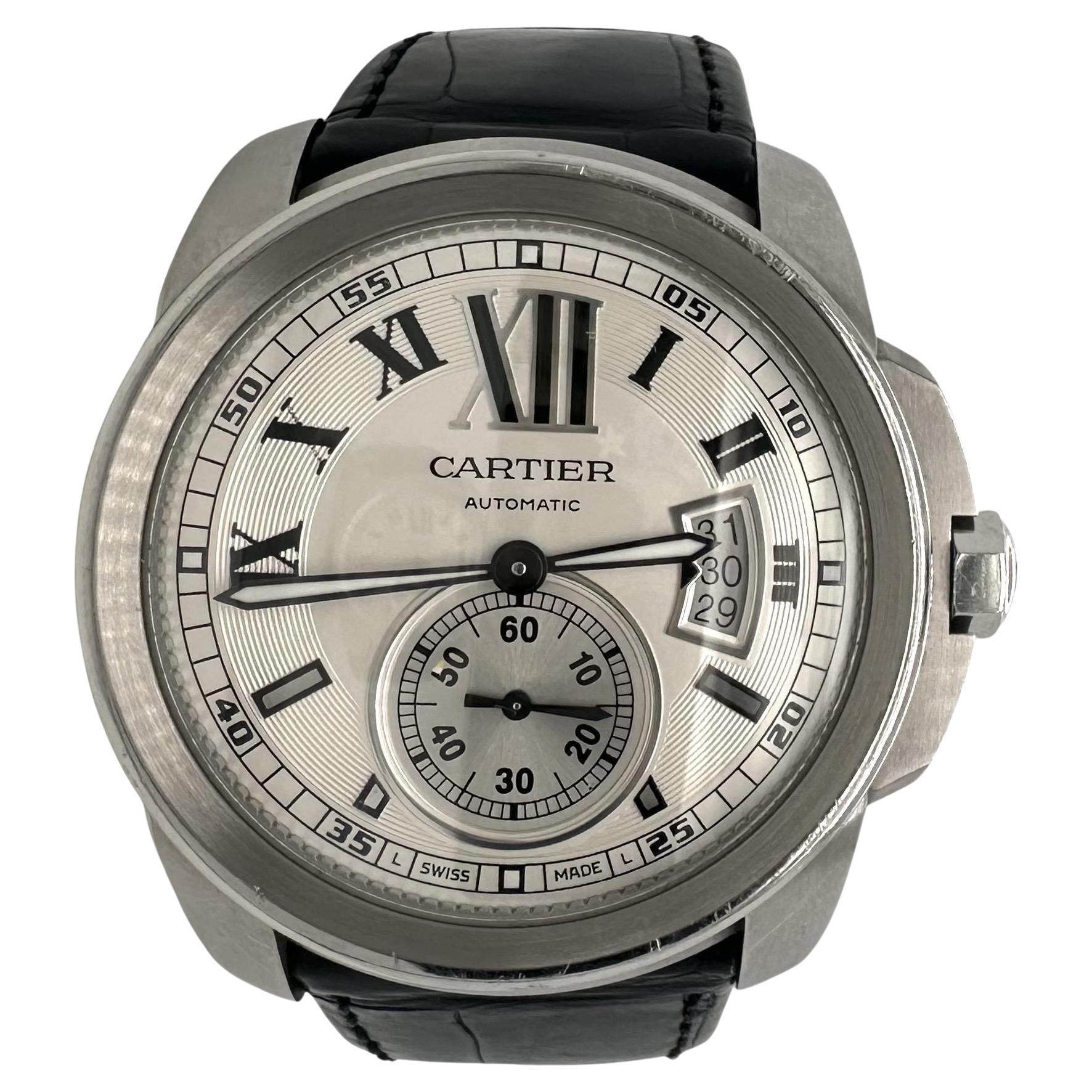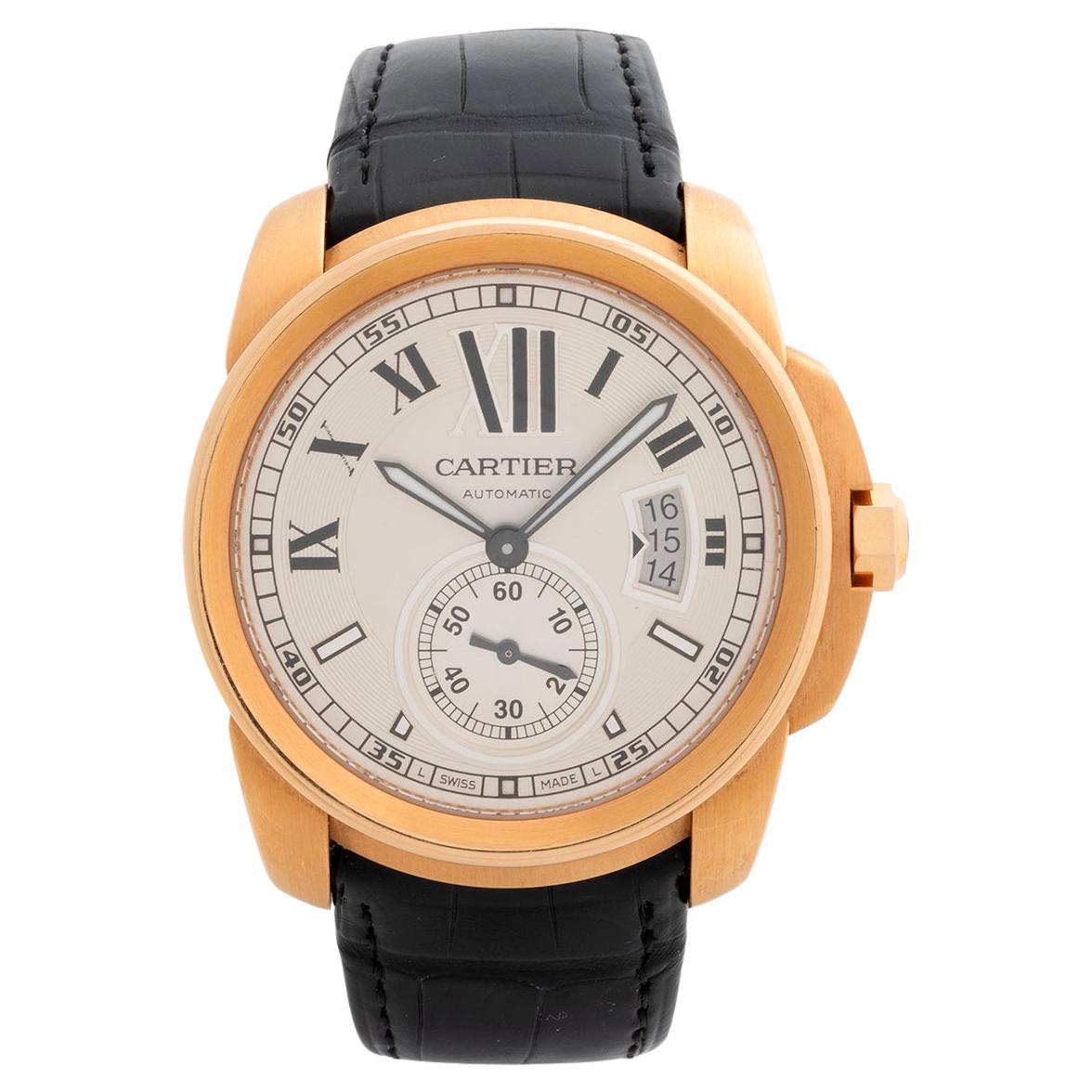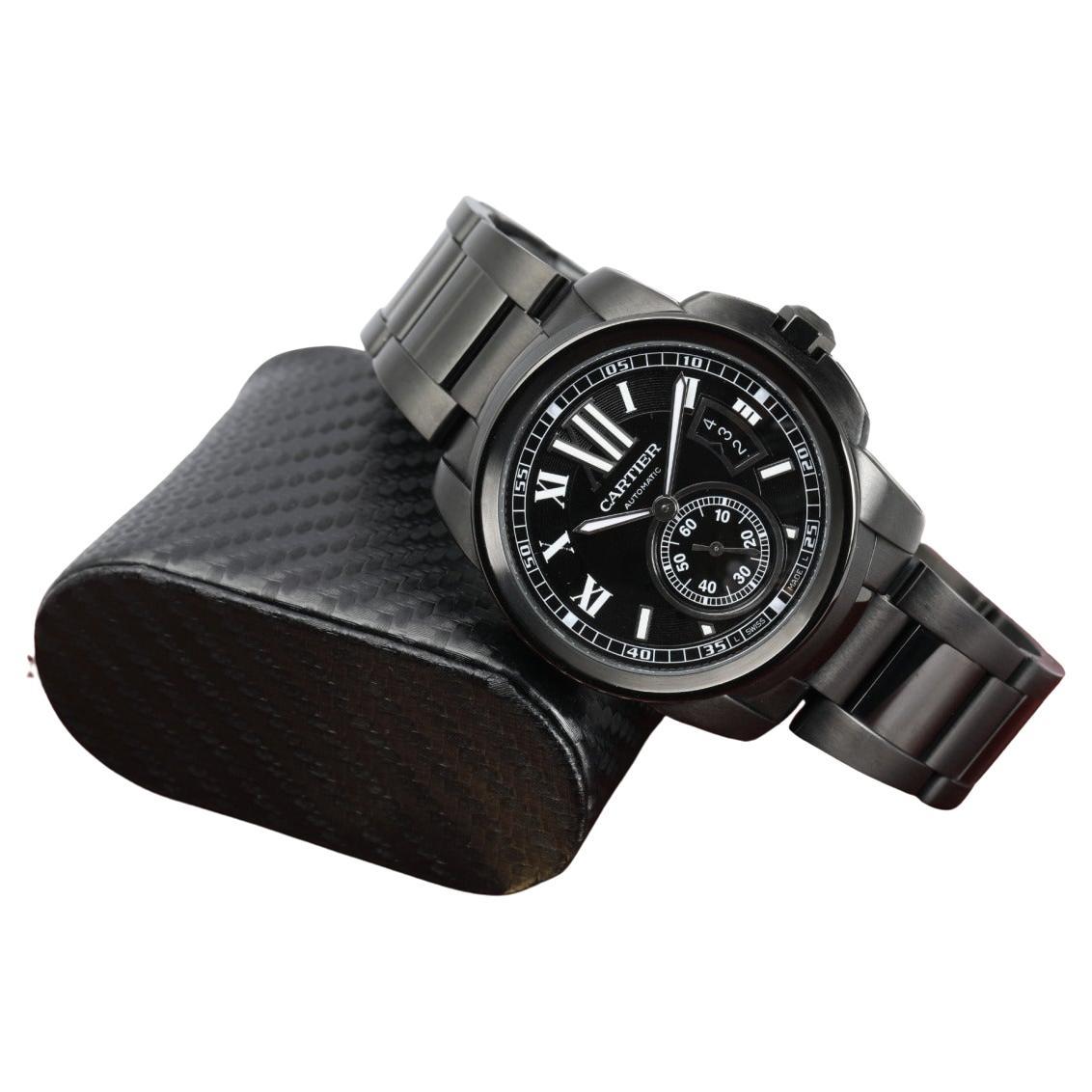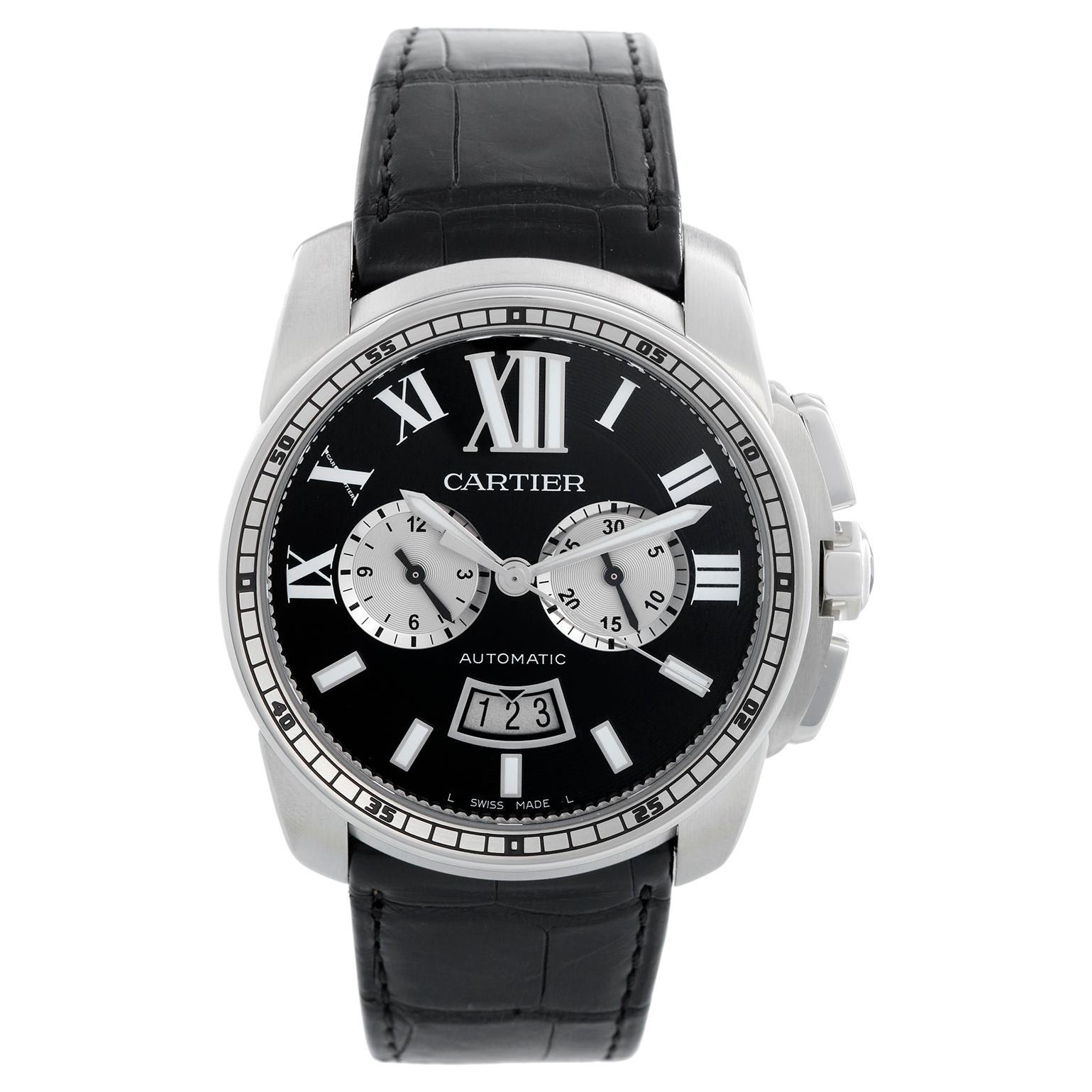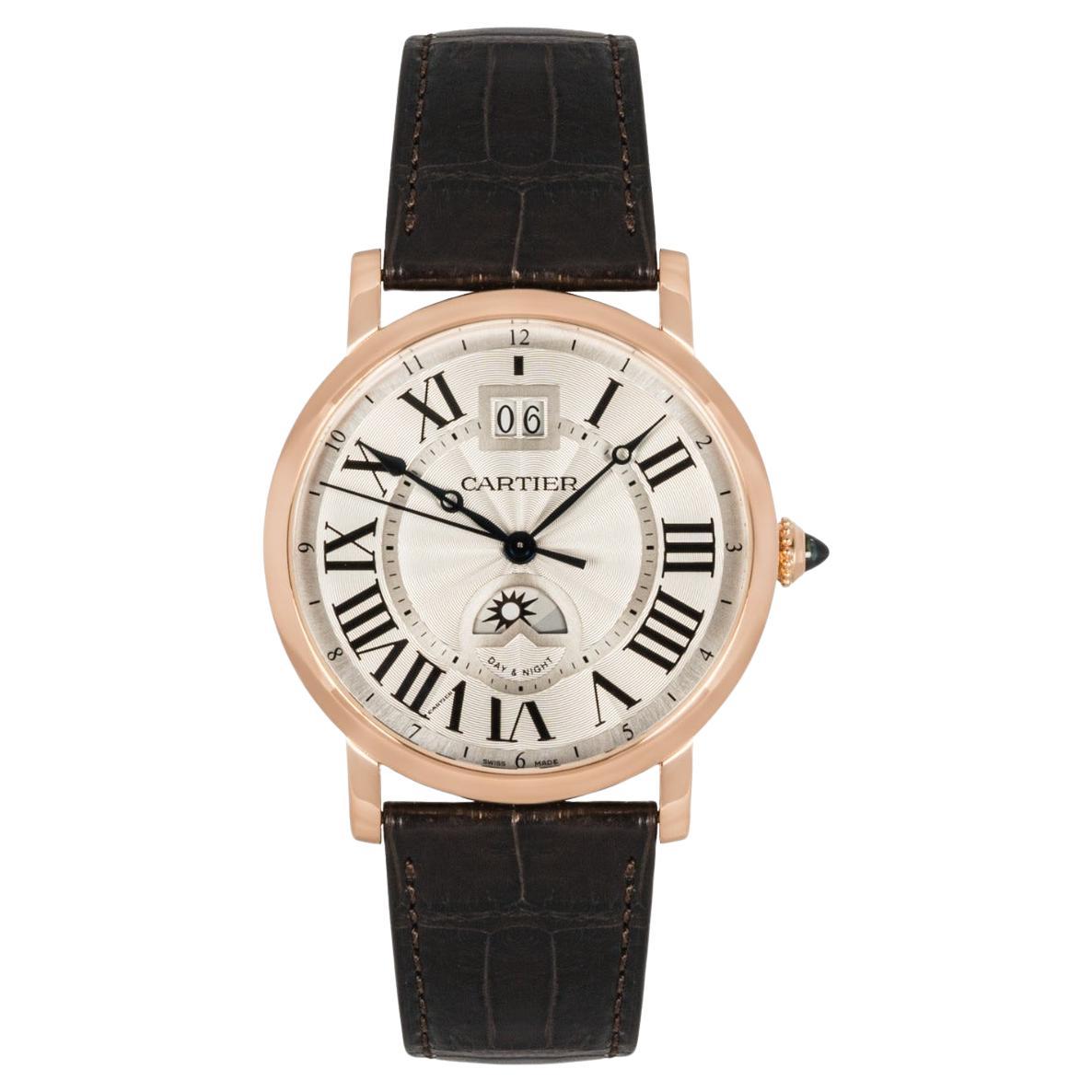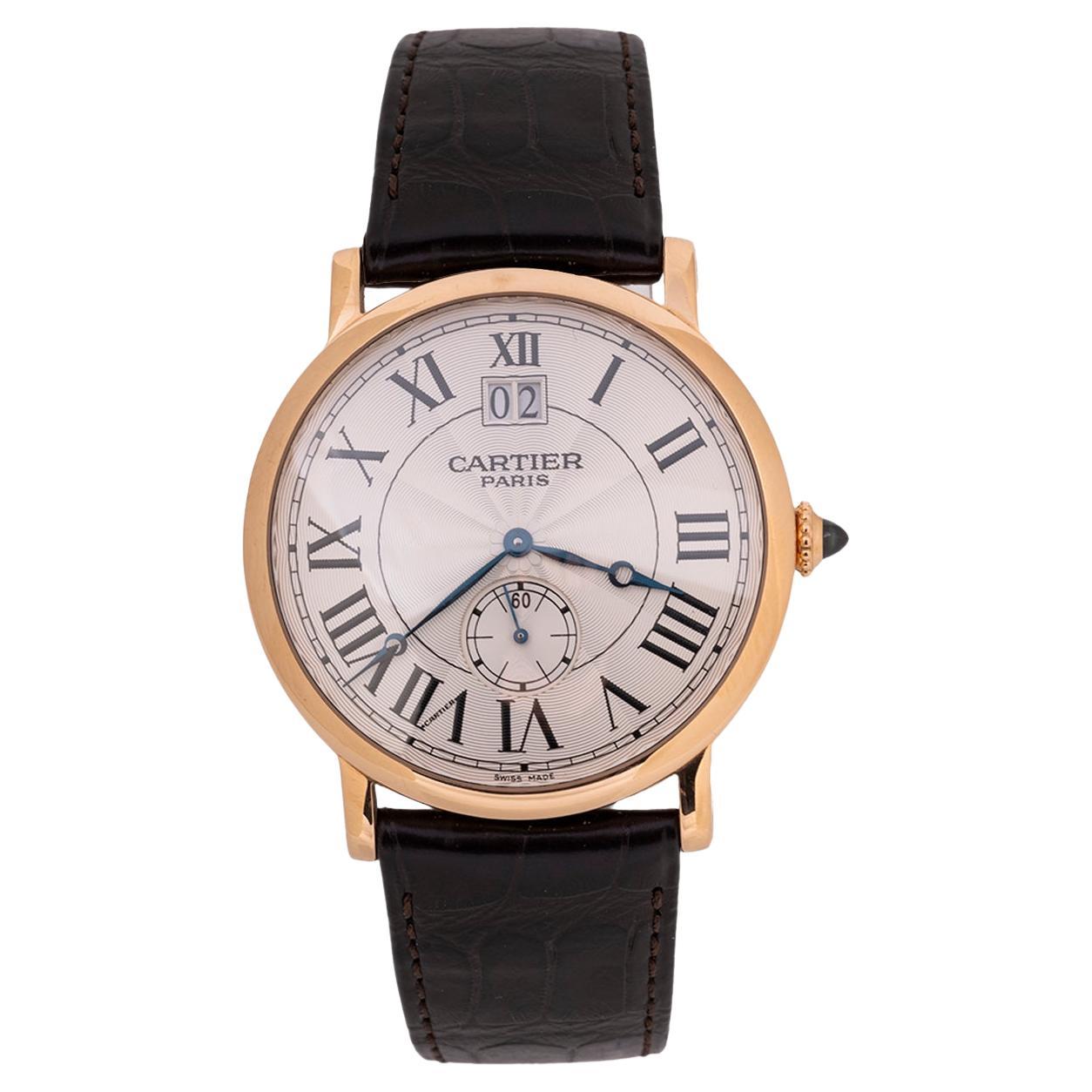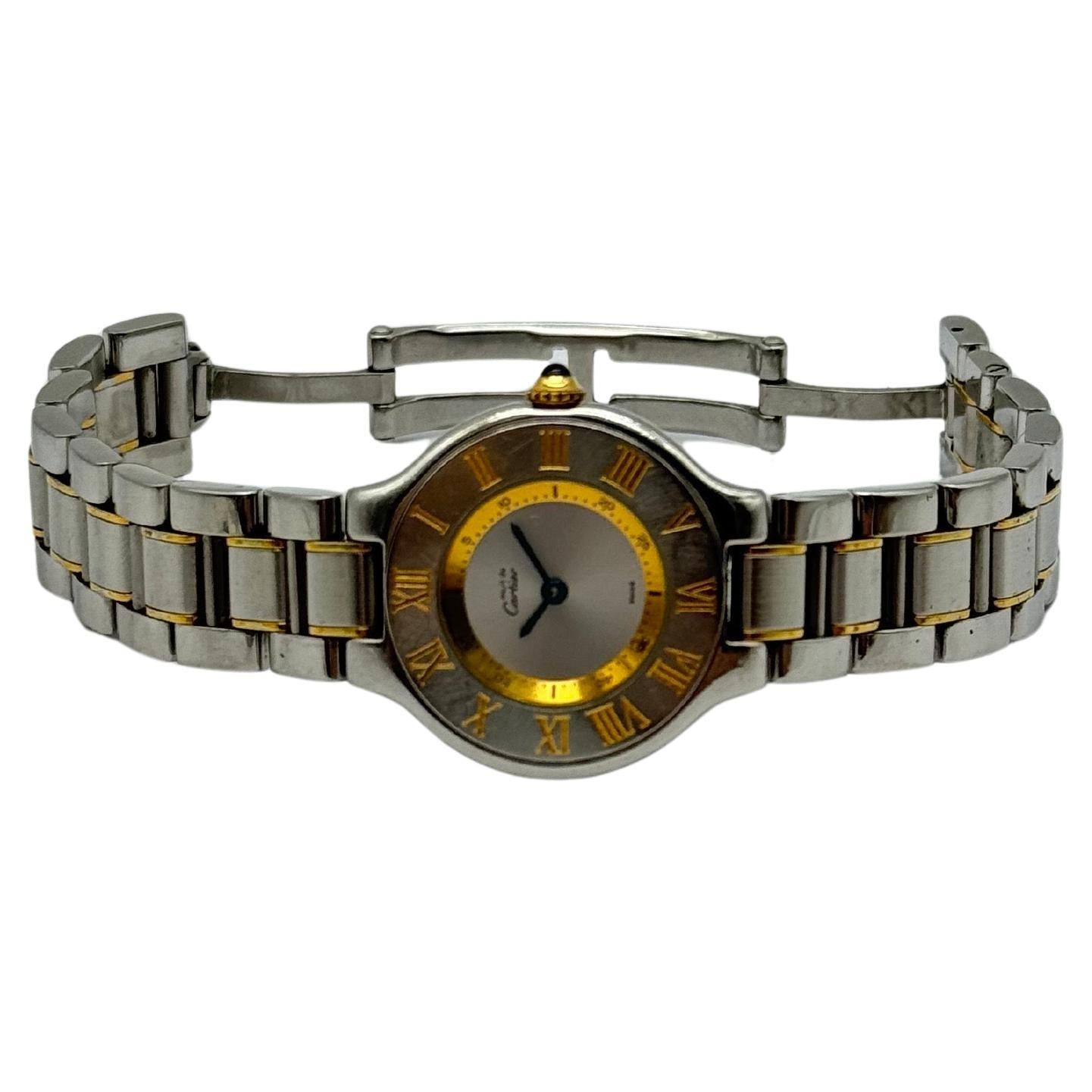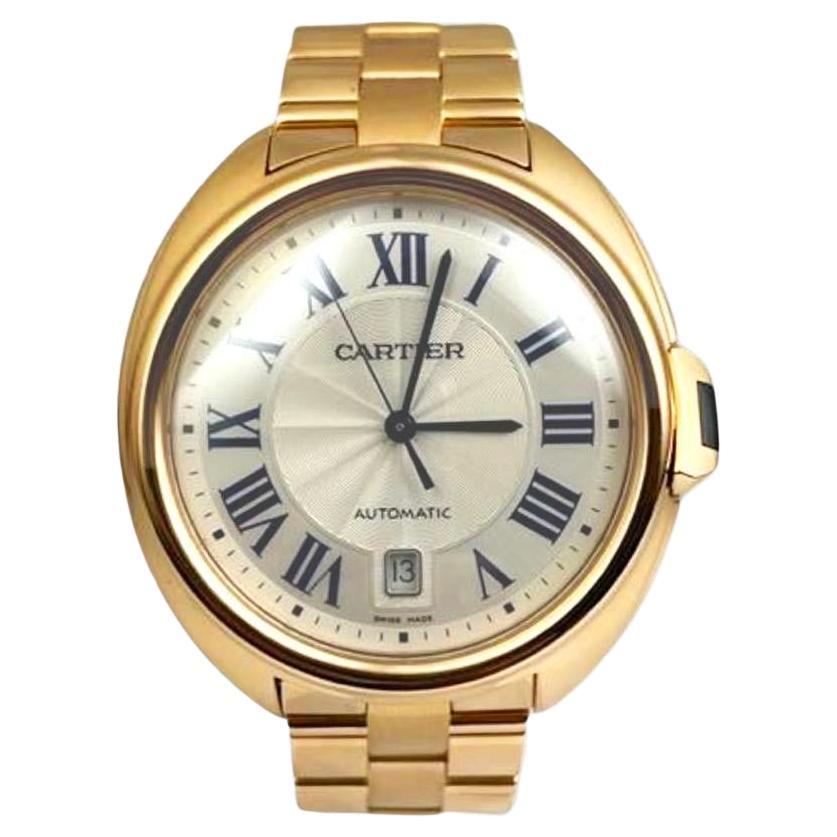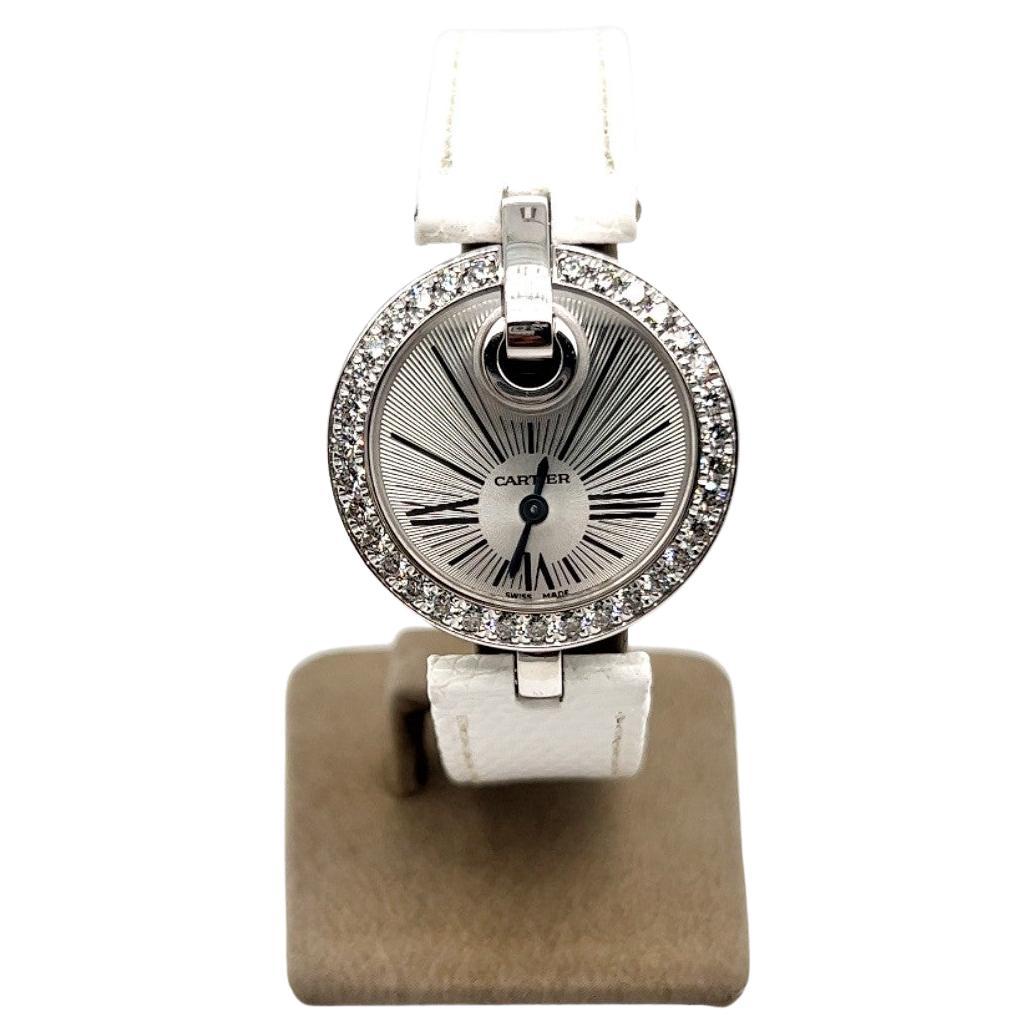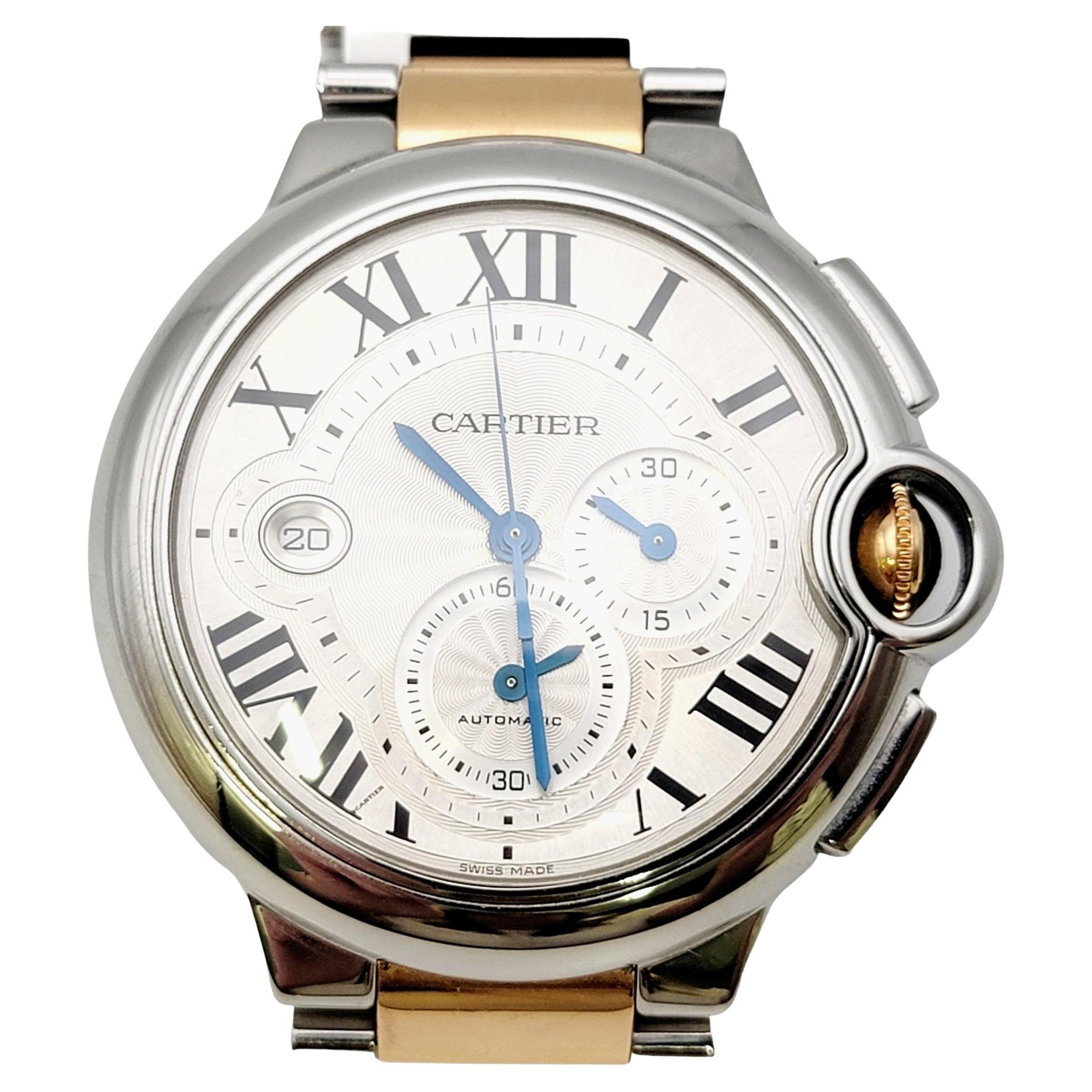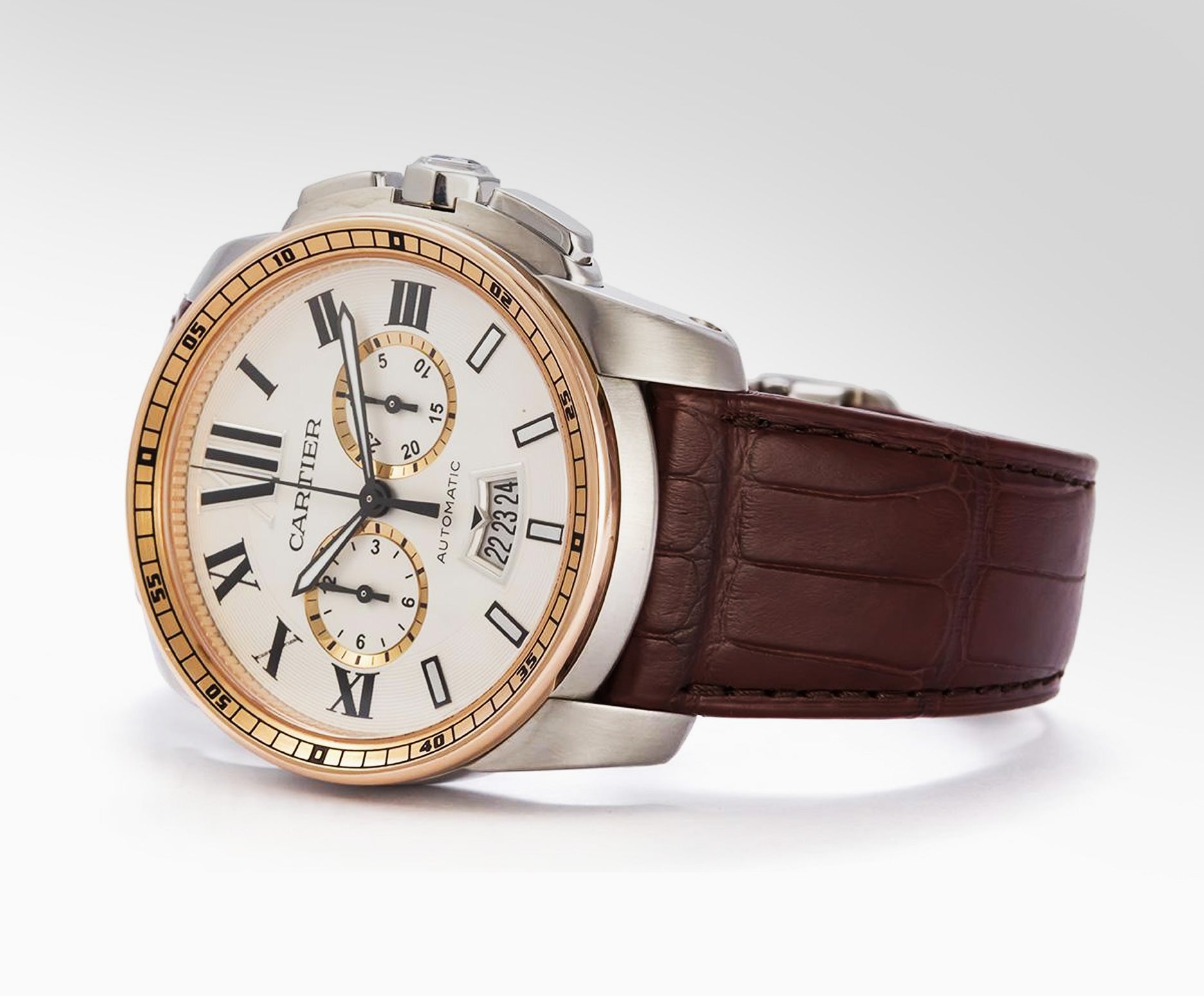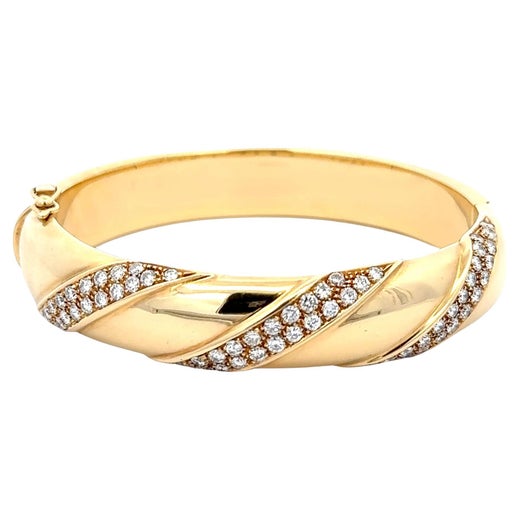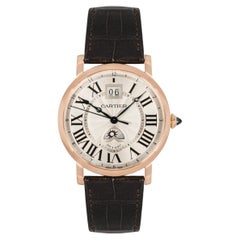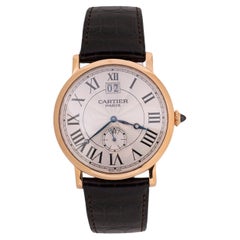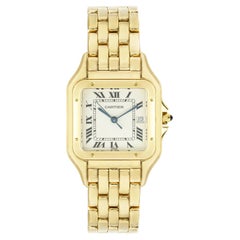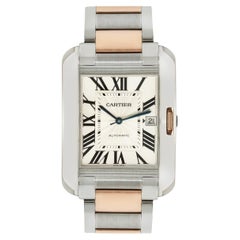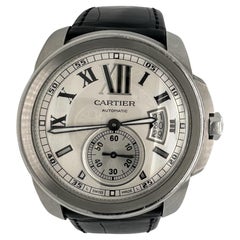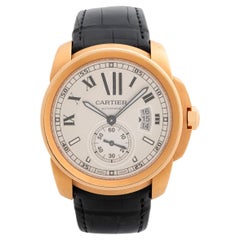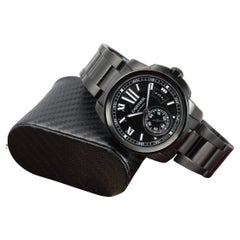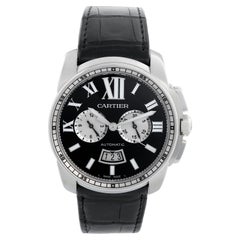
Cartier Calibre De Cartier W7100040
View Similar Items
Cartier Calibre De Cartier W7100040
About the Item
- Creator:
- Design:
- Case Material:
- Weight:256.4 g
- Strap Material:Rose Gold
- Case Shape:Round
- Movement:
- Case Dimensions:Diameter: 1.66 in (42 mm)
- Place of Origin:
- Period:
- Date of Manufacture:21st Century
- Condition:Wear consistent with age and use. In excellent condition, this timepiece comes with our own presentation box, our one-year warranty and guaranteed authenticity.
- Seller Location:London, GB
- Reference Number:Seller: 031023021stDibs: LU607320535182
Calibre de Cartier Watch
If you were to describe the Calibre de Cartier watch in a word, it would be simply this: masculine. And that is precisely what the Cartier design team intended. With a robust 42mm case, thick rounded lugs and a simple dial that combines Roman numerals and baton indexes, the 5.3-ounce watch exudes a gentle masculine aesthetic. Launched in 2010, the Calibre de Cartier was the internationally acclaimed French jeweler’s bold statement — and a relatively affordable one — in the men’s sports market, although the watch remains true to Cartier’s design heritage through signature elements, such as sword-like hands and an inlaid blue cabochon in the winding crown.
Founded in 1847, Cartier is credited with popularizing one of the first true modern wristwatches. Louis Cartier (1875–1942), the grandson of the house’s founder Louis-François Cartier, developed a wearable watch in 1904 at the request of his friend the charismatic pilot Alberto Santos-Dumont, who wanted to be able to tell the time mid-flight without pulling out his pocket watch. The resulting Santos watch was a commercial success, paving the way for other legendary Cartier watches like the Tonneau, the Tank Française and the Crash throughout the 20th century.
As Cartier entered the new millennium, it began producing a number of new models. Of these, the Calibre de Cartier is the company’s first watch to feature an automatic mechanical movement designed entirely in-house at Cartier’s production facility in La Chaux-de-Fonds, Switzerland. The 1904-PS MC mechanical movement is a technological marvel. Double barrels (rather than the standard single barrel) allow the watch to contain a 48-hour power reserve, meaning that the watch will display the accurate time off-wrist for two days. In addition, ceramic ball bearings offer the rotor protection from shock, and the rotor can be wound with movement from either direction, which is unusual for most automatic watches. For those who appreciate such details, the movement, in its intricate metallic beauty and blued screwheads, is visible through a sapphire crystal window on the back of the watch.
The original Calibre de Cartier was offered in assorted cases and dial colors with a leather band. Later, the timepiece became available with a bracelet and other variations on the original design, such as the Calibre de Cartier Chronograph and the waterproof Calibre de Cartier Dive. Although the Calibre de Cartier collection has apparently been discontinued, it remains popular on the secondhand market for a sporty design ethos that renders it ideal for daily wear.
Cartier
For its extraordinary range of bracelets, watches, rings and other adornments, French luxury house Cartier is undeniably one of the most well known and internationally revered jewelers in the world among clients both existing and aspirational.
Perhaps 1847 was not the ideal time to open a new watchmaking and jewelry business, as the French Revolution was not kind to the aristocracy who could afford such luxuries. Nevertheless, it was the year Louis-François Cartier (1819–1904) — who was born into poverty — founded his eponymous empire, assuming control of the workshop of watchmaker Adolphe Picard, under whom he had previously been employed as an assistant. Of course, in the beginning, it was a relatively modest affair, but by the late 1850s, Cartier had its first royal client, Princess Mathilde Bonaparte, niece of Napoleon Bonaparte, who commissioned the jeweler to design brooches, earrings and other accessories.
Under the leadership of Louis-François’s son, Alfred, who took over in 1874, business boomed. Royalty around the world wore Cartier pieces, including Tsar Nicholas II of Russia, the Maharaja of Patiala and King Edward VII, who had 27 tiaras made by the jewelry house for his coronation in 1902 and issued Cartier a royal warrant in 1904. (Today, the British royal family still dons Cartier pieces; Kate Middleton, Duchess of Cambridge, regularly sports a Ballon Bleu de Cartier watch.)
Cartier’s golden years, however, began when Alfred introduced his three sons, Louis, Pierre and Jacques, to the business. The brothers expanded Cartier globally: Louis reigned in Paris, Pierre in New York and Jacques in London, ensuring their brand’s consistency at their branches across the world. The trio also brought in such talents as Charles Jacqueau and Jeanne Toussaint.
One of Cartier’s earliest major successes was the Santos de Cartier watch — one of the world's first modern wristwatches for men. (Previously, a large number of people were using only pocket watches.) Louis designed the timepiece in 1904 for his friend, popular Brazilian aviator Alberto Santos-Dumont, who wanted to be able to check the time more easily while flying.
Cartier’s other famous timepieces include the Tank watch, which was inspired by the linear form of military tanks during World War I, and the so-called mystery clocks. Invented by watchmaker and magician Jean-Eugène Robert-Houdin and later crafted exclusively for Cartier in the house’s workshop by watchmaker Maurice Couët, the mystery clocks were so named because the integration of glass dials on which the clocks’ hands would seemingly float as well as structures that are hidden away within the base give the illusion that they operate without machinery.
On the jewelry side of the business, Cartier’s internationally renowned offerings include the Tutti Frutti collection, which featured colorful carved gemstones inspired by Jacques’s trip to India and grew in popularity during the Art Deco years; the panthère motif, which has been incorporated into everything from brooches to rings; and the Love bracelet, a minimal, modernist locking bangle inspired by medieval chastity belts that transformed fine jewelry.
While the Cartier family sold the business following the death of Pierre in 1964, the brand continues to innovate today, renewing old hits and creating new masterpieces.
Find contemporary and vintage Cartier watches, engagement rings, necklaces and other accessories on 1stDibs.
More From This Seller
View All21st Century and Contemporary French Wrist Watches
18k Gold, Rose Gold
21st Century and Contemporary Swiss Wrist Watches
18k Gold, Rose Gold
Late 20th Century French Wrist Watches
18k Gold, Yellow Gold
21st Century and Contemporary Swiss Wrist Watches
18k Gold, Rose Gold, Stainless Steel
21st Century and Contemporary French Wrist Watches
18k Gold, Rose Gold, Platinum
21st Century and Contemporary French Wrist Watches
Diamond, Rose Gold
You May Also Like
21st Century and Contemporary Wrist Watches
Stainless Steel
2010s Wrist Watches
Rose Gold
2010s Swiss Wrist Watches
Stainless Steel
20th Century Swiss Wrist Watches
Antique 19th Century French Aesthetic Movement Wrist Watches
18k Gold, Stainless Steel
2010s French Modern Wrist Watches
Rose Gold
Recently Viewed
View AllRead More
These White Lotus Guests Have the Most Compelling Watches
Throughout the season, timepieces are clues to the characters' character.
How to Spot a Fake Cartier Love Bracelet
This iconic jewel has captured countless hearts with its elegant design and its amatory symbolism. Counterfeiters have taken note of the demand and created fake versions. If you’re looking for a genuine Cartier Love bracelet, it’s crucial to check all the elements for authenticity. Our guide will teach you the telltale traits of a knockoff.
